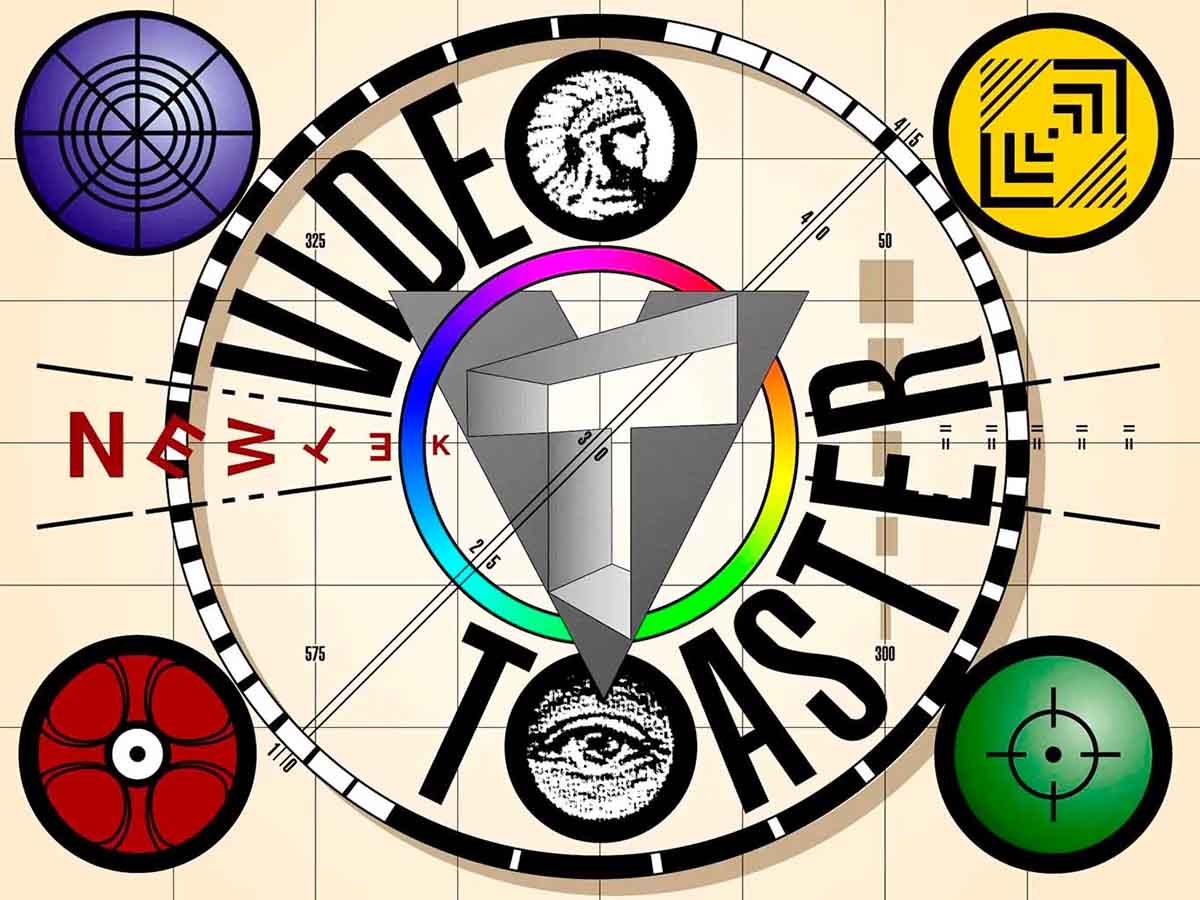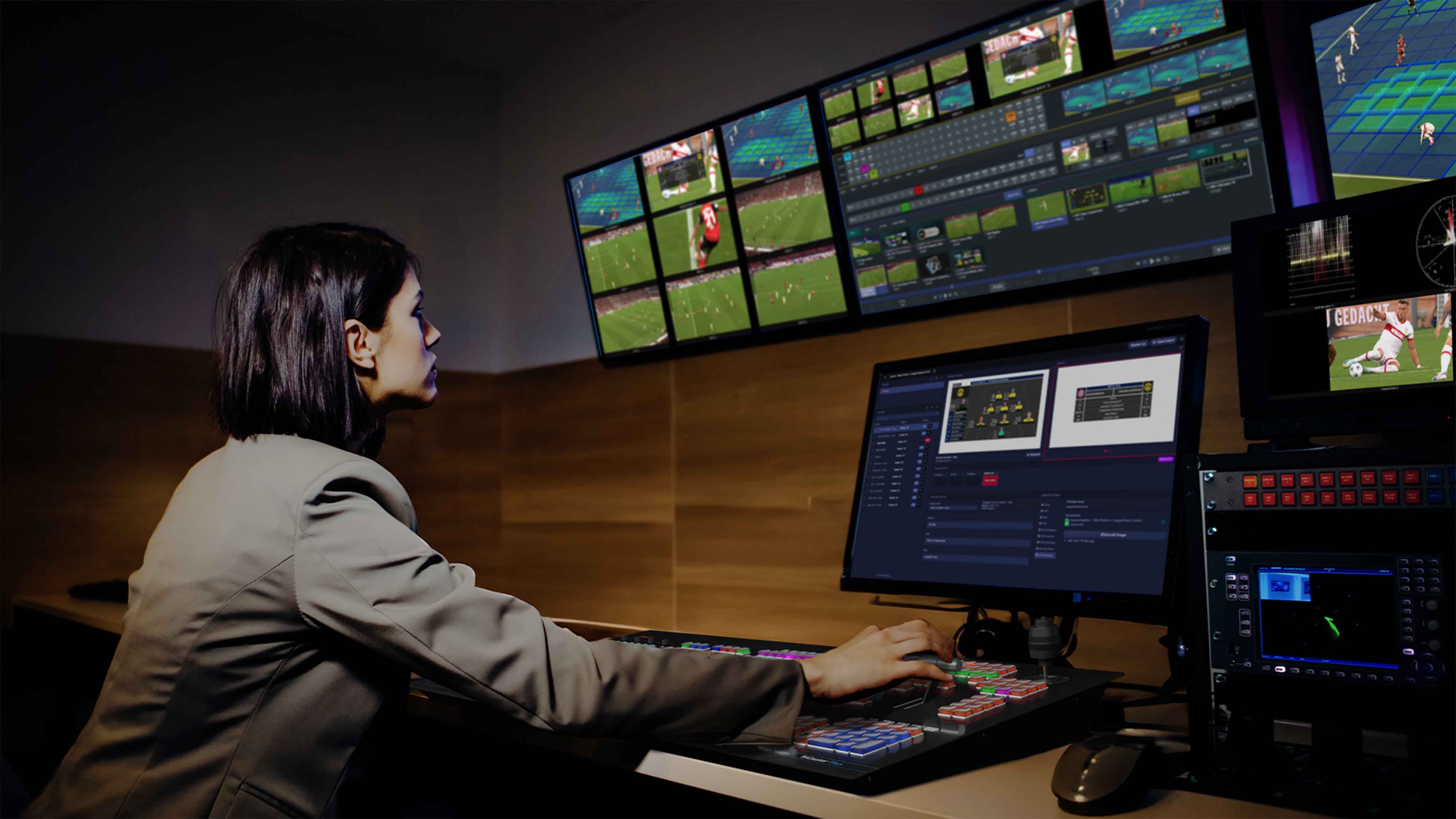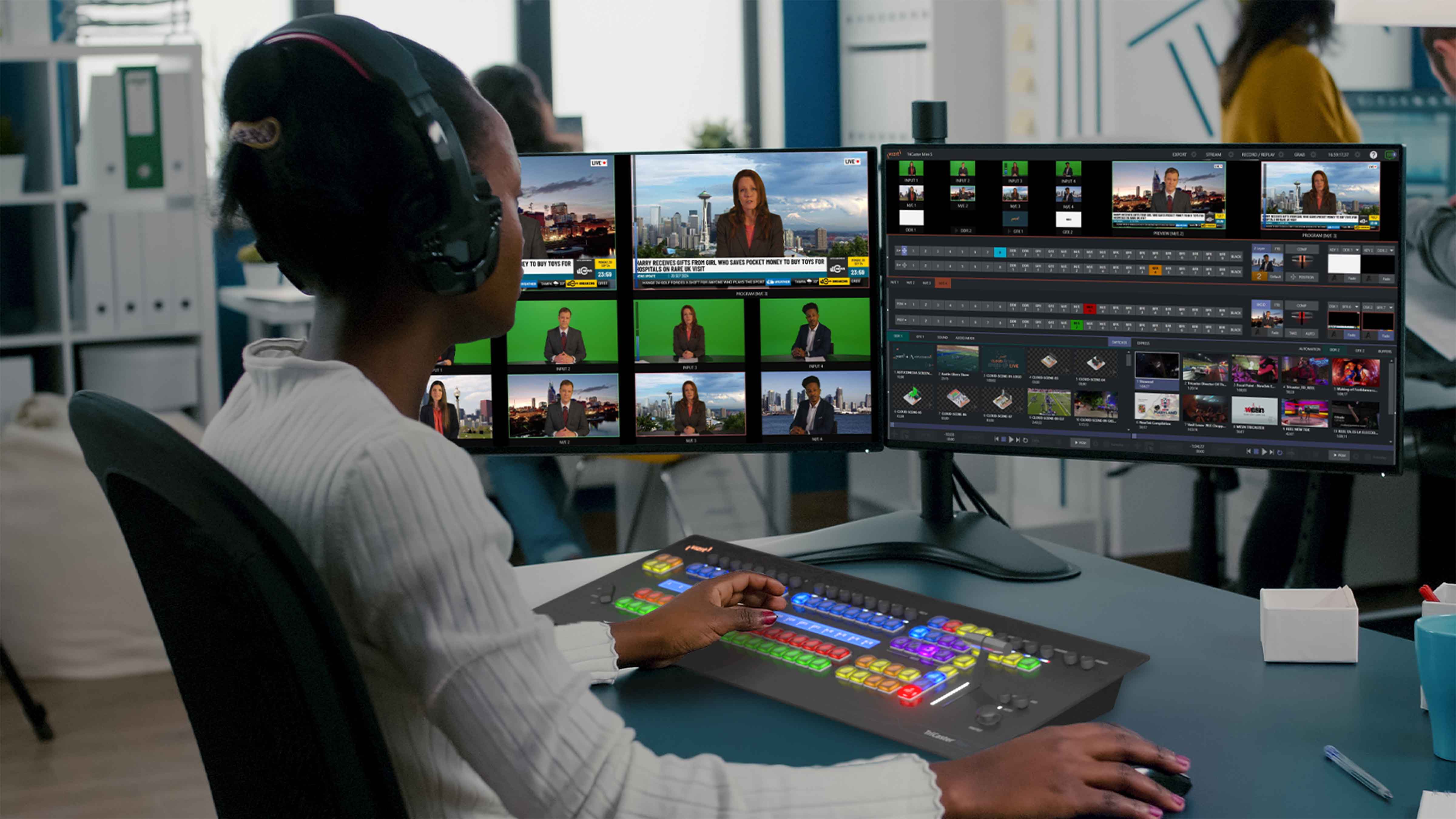Throughout the history of professional video production, transformative technologies have democratized their use and disrupted the status quo of expensive, proprietary solutions. Twenty years ago, the TriCaster was such a product, and it remains that way today under the ownership of Vizrt.
Introduced by NewTek at the NAB 2005 convention, the TriCaster—so named for its ability to input and output live and pre-recorded video, record it, and stream it over the internet—was initially a kludgey-looking silver box loaded with software that was working so hard it began to overheat after the first day of demonstrations and had to be restarted every hour or so for the remainder of the show.
However, its value was significant and clear to everyone who saw it, as the year ushered in a rapid increase in the evolution of technologies that needed content to make them useful, such as broadband, social media, and the internet on mobile phones.
To meet this growing revolution in desktop video, the initial TriCaster model integrated live video switching, broadcast graphics, virtual sets, and other production features into a portable and compact device. It was essentially a "TV studio in a computer," as some marketing materials at the time claimed.
From its humble beginnings as production switcher for SD video that used a keyboard and mouse instead of a traditional switcher panel, today's version of the same integrated production system is more advanced, less expensive than the sum of its features, and just as capable of handling high-quality content as any other solution. In fact, it's used to produce some of the most high-profile online content, such as part of FOX Sports’ coverage of this year’s NFL Super Bowl telecast.
Indeed, the nascent TriCaster has come a long way.
“It's amazing how the TriCaster has gone from people looking down their nose at it as not suitable for professional production to doing part of the Super Bowl this year,” said Chris McLendon, senior product manager for Vizrt’s TriCaster, 3Play, and Viz Connect products. “Even top-end broadcasters are having to stretch their budgets and get the most bang out of their buck. One of the ways to do that is to multitask products and have a single system do a lot of different things. That’s the concept that TriCaster was founded on.”
An Amiga Disruptor
TriCaster was originally developed by NewTek, a company founded in 1985 in Topeka, KS, by Tim Jenison and Paul Montgomery. The company eventually moved San Antonio, TX, in 1997, and was sold to Vizrt in 2019. NewTek’s history started with video capture hardware and editing software for the Commodore Amiga platform.
“I joined Vizrt in 2022, and from what I’ve been told, there was a lot of rebel outlaw mentality in the beginning of NewTek,” said McLendon. “They had a small group of really smart people, and they got together and went to trade shows, and they looked at how people were doing things and literally said, ‘Let's shake it up and do something completely different.’”
“NewTek was a major force in ushering in the historic digital television transition,” said Brian McKernan, former editor of Videography magazine, which covered the fledgling company extensively. “Innovative products such as the popular TriCaster were a natural extension of that.”
One of those innovative products was the famous Video Toaster.

“NewTek’s founders were personal computer enthusiasts as teenagers who built their company based on that perspective,” McKernan explained. “They instinctively recognized the value of what the 'off-the-shelf' and very affordable Commodore Amiga personal computer offered to the television production industry because of its special display system. Combining the Amiga’s unique 'Blitter' and 'Copper' chips, NewTek developed the broadcast-quality Video Toaster, which provided video producers at all levels with a video switcher, DVE, character generator, paint, and the Lightwave 3-D animation system. It was an immediate hit with everyone from Wayne’s World to Disney Studios.”
Continuous Upgrade Path
TriCaster systems utilize a customized version of Windows as their operating system, specifically a Long-Term Servicing Branch (LTSB) or Long-Term Servicing Channel (LTSC) variant. This means they are not standard Windows operating systems and focus primarily on security and stability. It's a specialized version designed for TriCaster’s specific hardware and live video production.
Over the ensuing years, the TriCaster was incrementally improved with new features and better signal support for professional workflows. At NAB 2006, NewTek announced TriCaster PRO, which introduced professional video, audio connections, and virtual sets (using proprietary NewTek LiveSet technology) to the TriCaster line. Next came TriCaster STUDIO, the first TriCaster to support six cameras, and then TriCaster BROADCAST, the first model to deliver SDI video and audio support.
In early 2009, NewTek introduced 3PLAY, a portable multi-channel HD/SD slow-motion replay system. TriCaster TCXD300, the first HD TriCaster, came in 2009, and in 2010, NewTek introduced TriCaster TCXD850, a 22-channel HD model in a rackmount form factor.
At the IBC 2025 show in Amsterdam, NewTek introduced its IP networking protocol, Network Device Interface (NDI). The predecessor to NDI was called AirSend, which was primarily used as an IP video tool for TriCaster users. The system included the world’s first natively integrated NDI video switcher.
Among the many influential features added to the TriCaster is Live Call Connect, which allows users to integrate remote callers from videoconferencing applications like Zoom, Microsoft Teams, Discord, and Slack into productions. This feature, introduced as part of the TriCaster 2 Elite systems, proved to be highly beneficial when remote working became the norm during the pandemic. “Vizrt/NewTek was one of the first people to say, 'If you've got a Skype caller, you should be able to pull that directly into a broadcast,'” said McLendon.

That system was one of its best-selling TriCaster products ever. It has since been replaced with the new TriCaster Vizion system, which offers advanced graphics, AI-powered tools, and configurable SDI/IP I/O. The AI tools are built on the Nvidia framework, particularly those leveraging GPUs. “They were ahead of the curve in terms of remote collaboration, and it’s another example of the company being innovative,” McLendon said. “Vizrt has an entire roadmap for adding AI-powered tools in the future. This includes some gaze correction that can automatically trim shots where the talent has moved out of frame.”
Software Legacy
Looking at its underlying architecture, the TriCaster was, in effect, an appliance built on a Windows platform for the first 15 years or so. However, over the past few years, the company has focused on more software-only features. To that end, Vizrt now offers TriCaster Mini S, a software-only solution that customers can use with their own hardware. Another option is TriCaster Vectar, a cloud-based 4K production system.
“That's one of the reasons why we can do some of the things that we can do that others can't—because it was always built on software," McLendon explained. "The hardware was just a vehicle to get to where customers want to go. The challenge was that the hardware was not good. Well, now we've gotten to a point in time where the hardware, even consumer hardware, is amazing in the things it can do. So, as hardware processing gets better and faster, it will only improve TriCaster’s performance."
Today, the Vizrt TriCaster product line includes models for practically any application, from on-premise production to cloud and software-based solutions. So, where does the TriCaster stand in the pantheon of paradigm-shifting technologies for video production? McLendon argues it revolutionized the idea of doing full productions in one integrated system.
"I think the fact that you now see so many multitasking products is a testament to the founders seeing an opportunity to make video production easy and affordable," he offered. "That's the legacy, because the TriCaster concept was so simple. It is one system that has multiple capabilities, enabling customers to avoid having to buy and learn five different systems. What was once a disruptor is now the most cost-effective and efficient way to produce and distribute professional audio and video content.”

